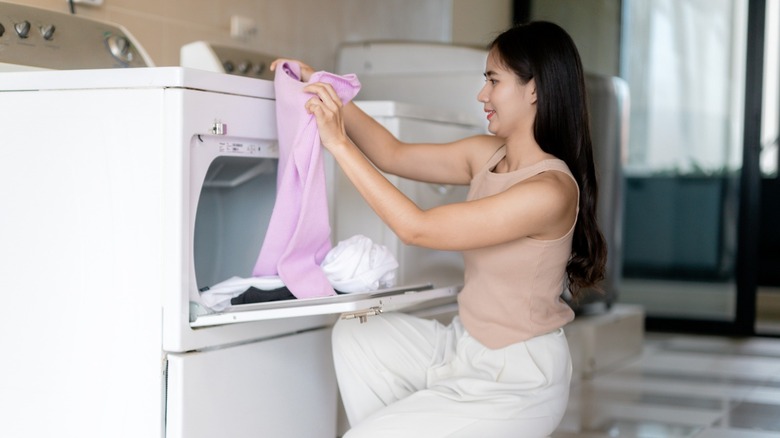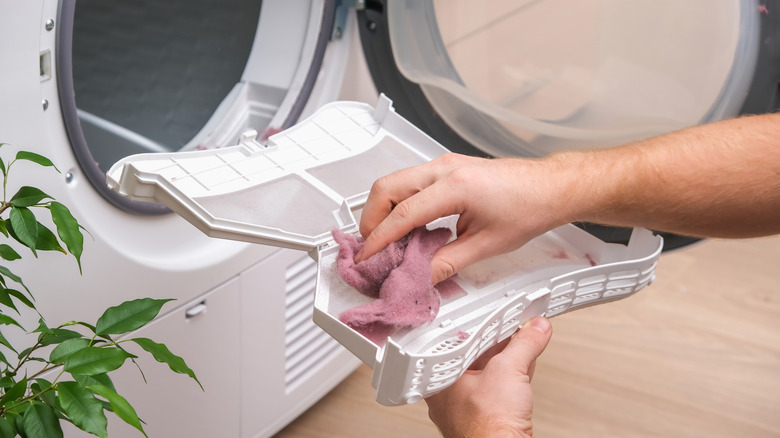Safety Tips To Keep In Mind After Installing A Gas Dryer
When shopping for a new dryer, you have two options: gas and electric. There are some notable differences between a gas and an electric dryer, but many homeowners choose gas for its immediately observable benefits, like faster drying times, lower operating costs, and higher energy efficiency. While electric dryers use an electric heating element, gas dryers are hooked up to a natural gas line to generate heat. Even though gas dryers are not inherently more dangerous than electric ones, there are a few risks to be aware of that their electric counterparts don't present. Gas dryers can lead to a potential gas leak if the line connection is faulty, creating a potential fire hazard. Additionally, if the dryer isn't properly vented (or if the vent is blocked), it could pump carbon monoxide directly into your home, causing a significant health risk.
To minimize these safety risks, there are some tips to keep in mind, both when installing a new gas dryer and operating one that's been around for years. These include knowing how to prevent a fire, keeping proper safety equipment like extinguishers and alarms, understanding carbon monoxide (CO) and proper gas connections, and following general operational safety and maintenance guidelines. And regardless of dryer type, remember that it's crucial to never run your dryer when you're away from the house, since leaving it unattended could lead to disastrous results.
How to protect yourself and your home when using a gas dryer
There are some universal truths to operating a dryer, whether gas or electric. To prevent fires and keep the dryer running efficiently, you need to clean the lint filter before or after every load and clear the vents regularly. There's a good chance you're not cleaning your dryer vents as often as you should be, which is at least once a year or more frequently if you have pets or a large family. Another way to prevent a dryer fire is to clear the area around it — no clothes, boxes, or flammable liquids nearby. Finally, no matter the machine's style, you'll need to think twice about putting laundry exposed to certain substances in your dryer to prevent ignition during a cycle.
Gas dryers have additional precautions that must be followed in order to keep everyone safe. Start by checking that the gas supply line and vent tubing are clean, sealed at all points, and undamaged. Knowing the gas shut-off valve's location behind the dryer is also crucial — this lets you quickly stop the gas flow in an emergency. Everyone in the home should know where to locate the valve and how to shut it off. Since you'll be using natural gas to dry clothes, which produces carbon monoxide, install a carbon monoxide detector in the laundry area. Carbon monoxide is odorless and colorless, so the only way to know there is a problem before there's a health crisis is to have an alarm. To help avoid CO emissions, vent your gas dryer directly outside via rigid or semi-rigid metal ducting. Finally, you'll want to have your gas appliances inspected once a year by an HVAC technician to ensure the gas line and connections are intact and leak-free.

